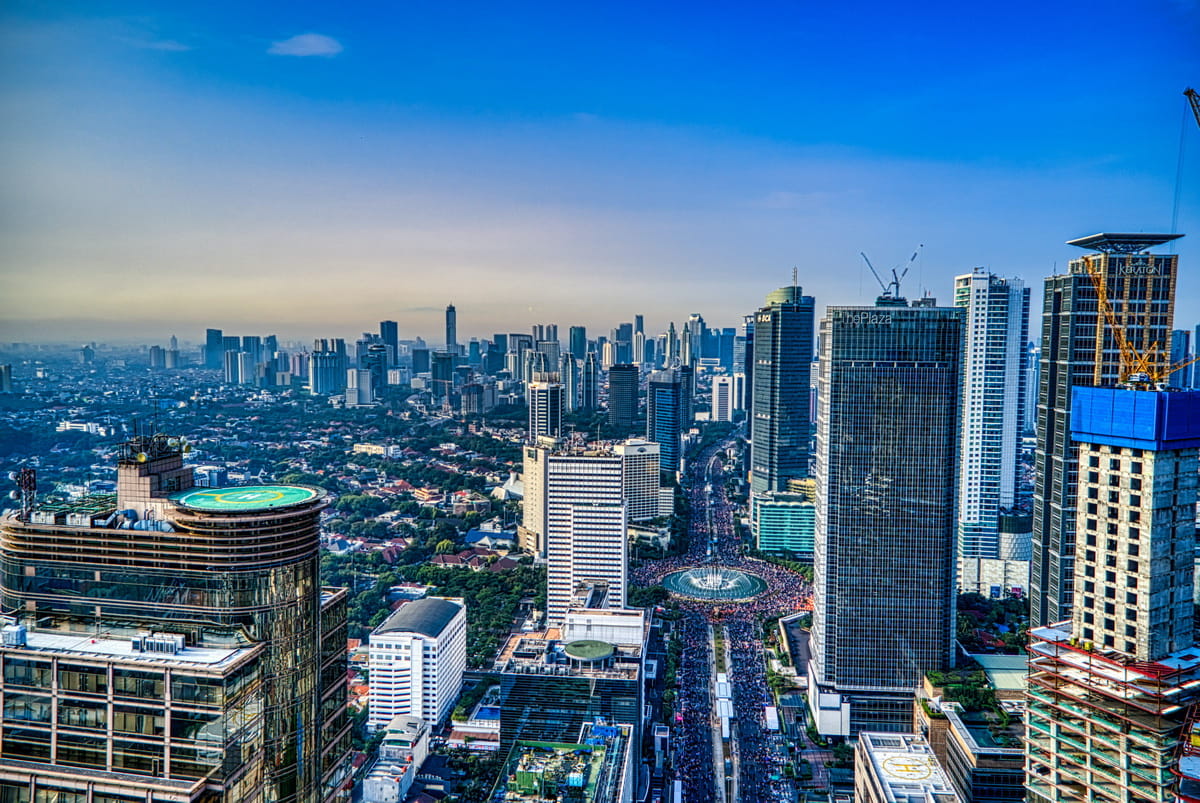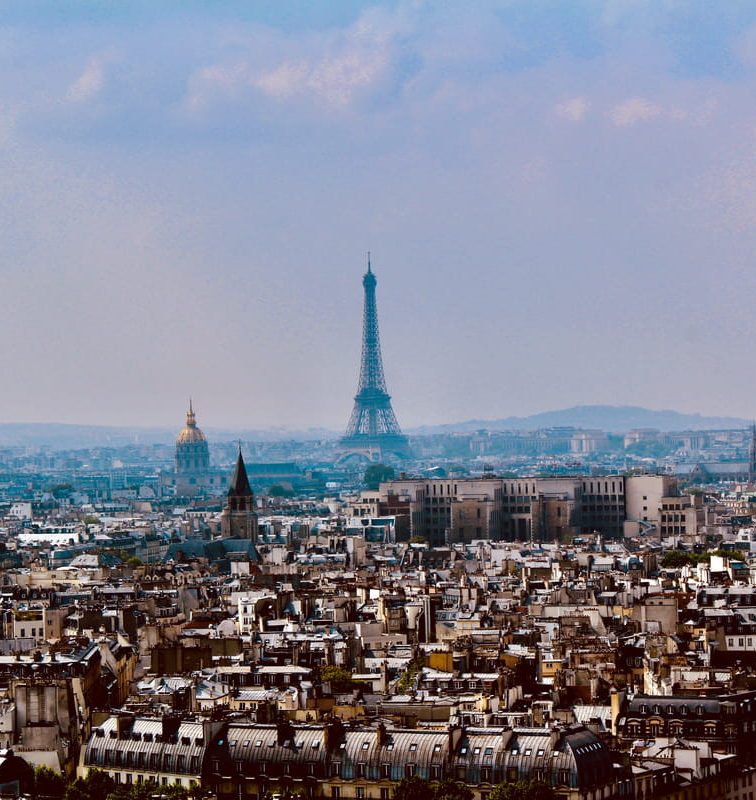Hey there, globetrotter! Ready to unwrap some delicious morsels about Jakarta, Indonesia’s sprawling capital city? Well, you’ve clicked on the right link. Today, we’re diving into 35 fun facts about Jakarta that will make you want to book a ticket ASAP—or at least make you the star of your next trivia night.
From its claim as the world’s largest Muslim-majority city to its quirky nickname as the “Big Durian,” Jakarta is a melting pot of cultures, traditions, and paradoxes. Oh, and let’s not forget the traffic jams so legendary, they could give Los Angeles a run for its money.
So, without further ado, let’s delve into the whirlpool of interesting facts, amazing facts, and all things Jakarta!
1. World’s Largest Muslim-majority City
Did you know that Jakarta isn’t just a populous city but also holds the title for the world’s largest Muslim-majority city? Yeah, you heard it right! With over 200 mosques scattered around the area, Islam plays an integral role in Jakarta’s culture.
But hey, don’t assume that Jakarta is a monolith. The city’s religious fabric is more like a quilt, sewn together with patches of Christianity, Hinduism, Buddhism, and more. However, when it comes to sheer numbers, Muslims take the cake.
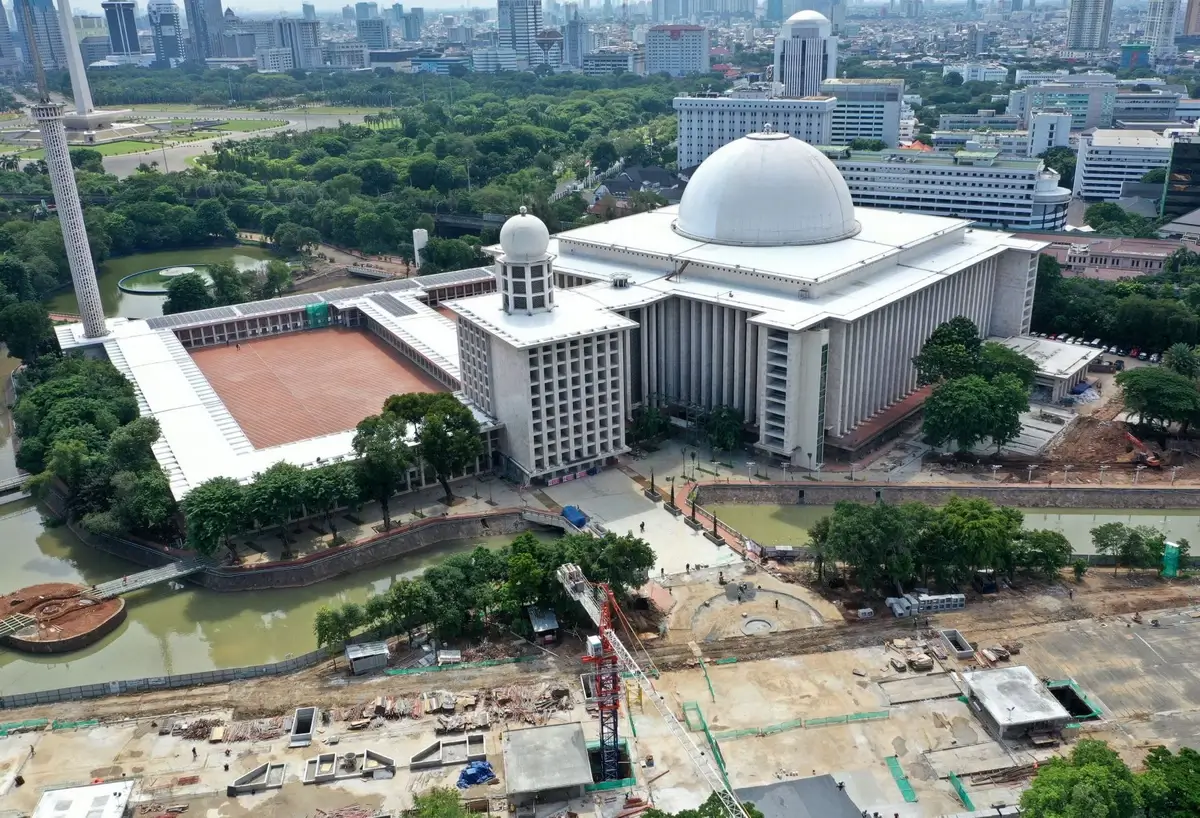
Image source: skyscrapercity.com
2. Fastest Sinking City
Hold on to your coffee cups, people! Jakarta is sinking—literally. According to studies, some parts of the city are sinking as fast as 25 cm per year. It’s the fastest sinking city in the world, giving a whole new meaning to “going under.”
The causes? Over-extraction of groundwater and the weight of the built environment. Yeah, that’s right! Jakarta’s got some hefty construction projects that have the earth bowing down—just not in the way we’d want.
3. The Mega Traffic Jams
Ah, traffic in Jakarta. If you thought your city had bad traffic, wait till you get a load of Jakarta. The mega traffic jams here are so infamous, they have a name: “macet total,” or total gridlock.
In fact, the congestion is so bad that Jakarta has odd-even license plate restrictions just to manage the chaos. But hey, when life gives you traffic, Jakarta gives you street food right through your car window. Yes, street vendors make the most of the standstill by selling snacks to drivers stuck in traffic.
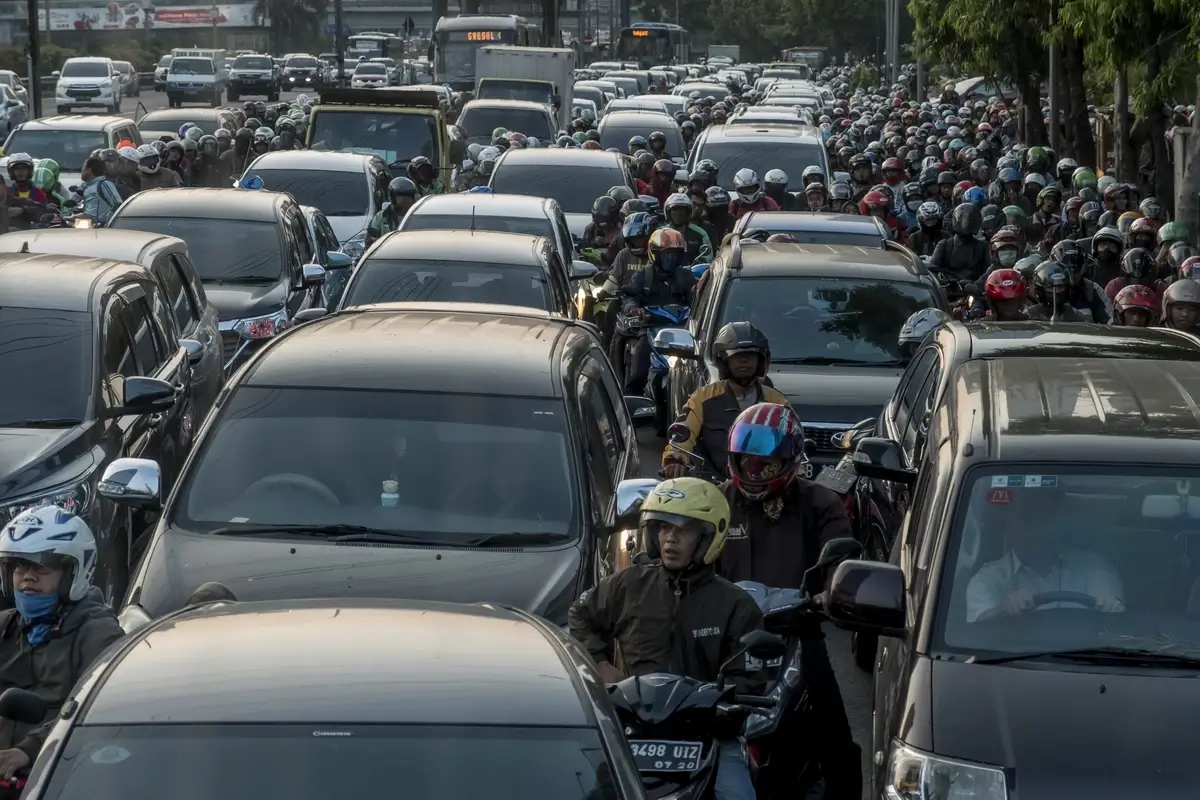
Image source: newsinfo.inquirer.net
4. Thriving Street Food Scene
Who needs Michelin stars when you’ve got Michelin-worthy street food, am I right? If your tastebuds are itching for adventure, Jakarta’s thriving street food scene is a culinary wonderland. From “Nasi Goreng” (fried rice) to “Satay” skewers, Jakarta is a foodie’s dream come true.
But what sets Jakarta’s street food apart? The variety! The city is a mix of Indonesian cultures, and that diversity shines through its food. You’ll find everything from Javanese to Sumatran to Balinese dishes, all served roadside for a fraction of restaurant prices.
5. Monas: The National Monument
Say hello to Jakarta’s most iconic landmark: the Monas, or the National Monument. Think of it as Jakarta’s version of the Eiffel Tower but with a flame on top that’s coated in 50 kg of gold leaf. This 132-meter tall monument is more than just a pretty Instagram spot; it’s a symbol of Indonesia’s struggle for independence.
Located in the center of Merdeka Square, this spire offers an epic panoramic view of the city. The best part? You can take an elevator all the way up! So, if heights are your thing, Monas is your playground.
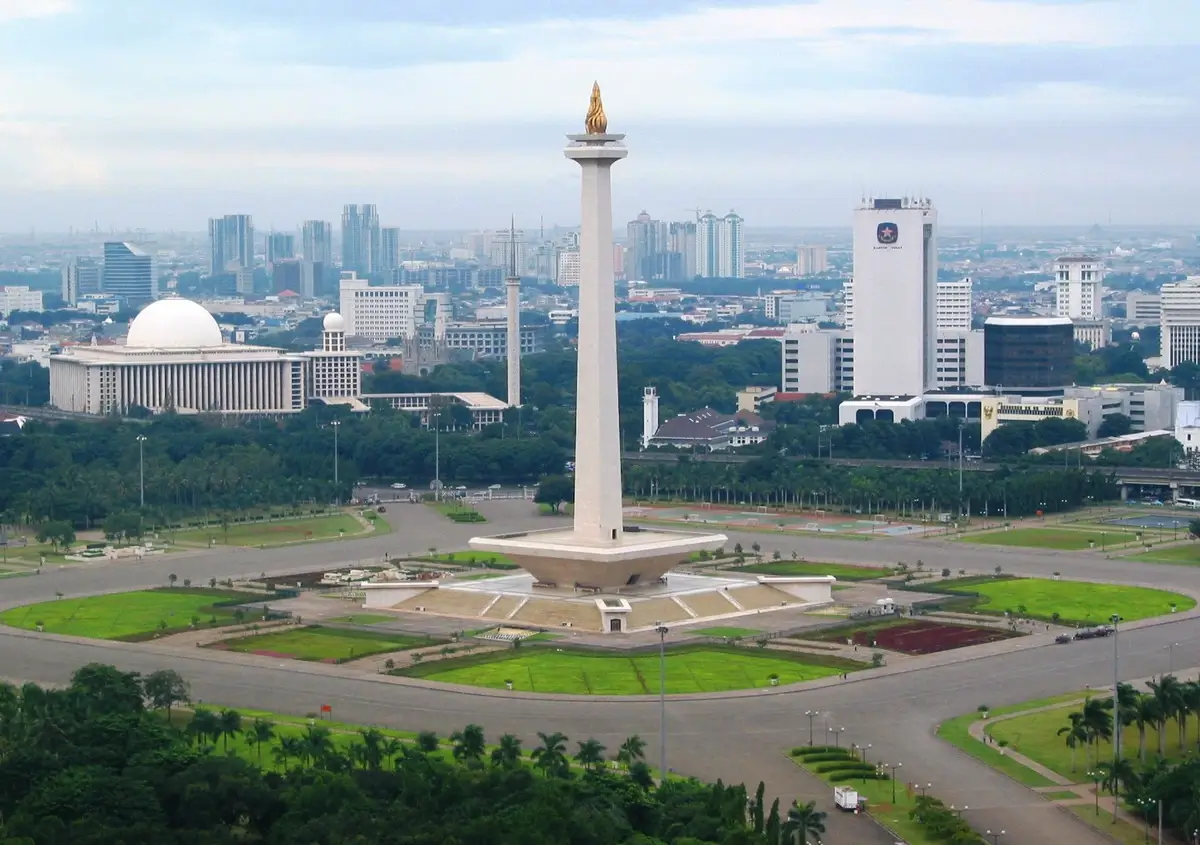
Image source: iwarebatik.org
6. Jakarta’s Old Town (Kota Tua)
Step back in time with Jakarta’s Old Town, known locally as Kota Tua. This area is a living postcard of the city’s colonial past, complete with Dutch-style buildings and cobblestone streets. If you’re a history buff, this is your Disneyland.
Stroll around Fatahillah Square, and you’ll see the Jakarta History Museum, which was once a city hall built in 1627. Nearby, there’s also the Wayang Museum dedicated to traditional Indonesian puppetry. It’s history served up on an Instagrammable platter!
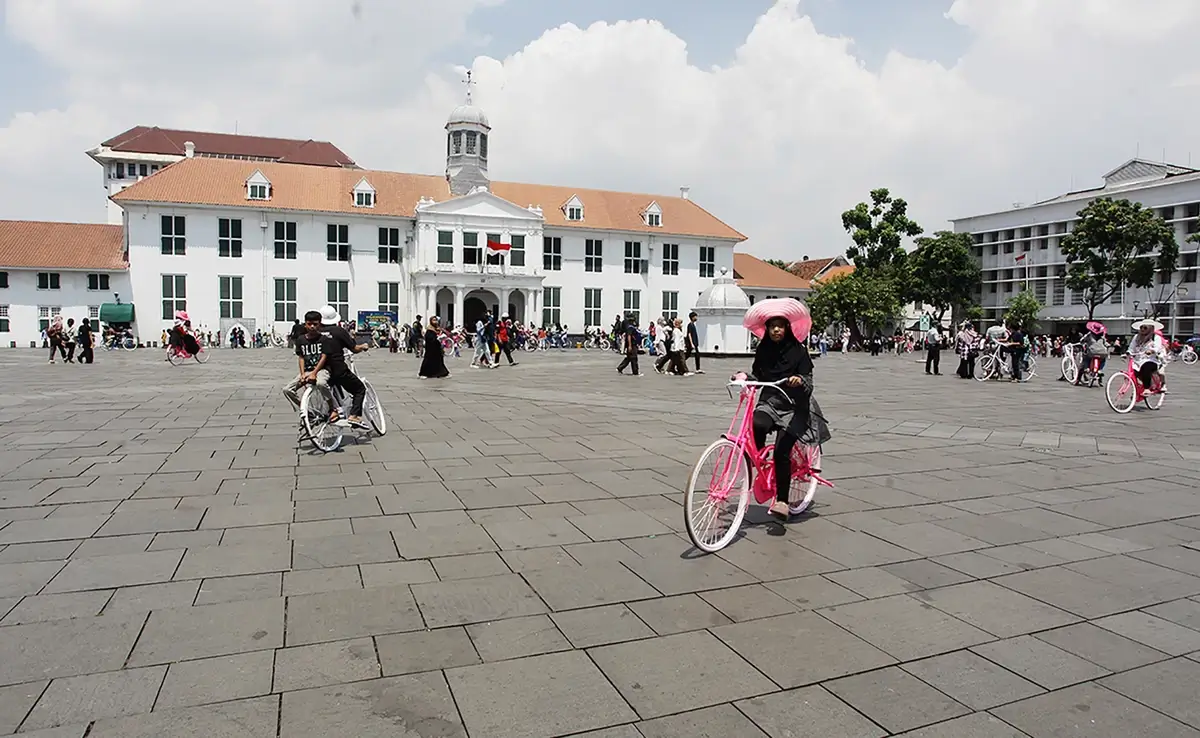
Image source: Kota Tua
7. Home to Mini Indonesia (Taman Mini Indonesia Indah)
Indonesia has over 17,000 islands and diverse cultures, but who has the time to see them all? Fret not; Jakarta offers a shortcut with Taman Mini Indonesia Indah, a park that serves as a mini-Indonesia. It’s basically the whole country served up in a 250-acre platter.
Spread across the park are replicas of homes from the 26 provinces of Indonesia, along with museums, theatres, and gardens. You can witness the diversity of Indonesian architecture, clothing, and even dance performances, all in one day!
8. Jakarta’s Land Is Reclaimed From the Sea
Get this: Jakarta isn’t just sinking; it’s also growing. A paradox, you say? Let’s explain. Parts of Jakarta’s land are literally reclaimed from the sea. In an effort to expand and develop, Jakarta has undergone several reclamation projects, transforming sea into land for commercial and residential purposes.
It’s fascinating but also controversial. Environmentalists have their concerns, but the land keeps popping up like a game of Indonesian Whack-a-Mole. So next time you’re in a flashy part of Jakarta, remember—you might just be standing on former seabed.
9. A Mix of Cultures: Betawi
Meet the Betawi, Jakarta’s native inhabitants, and the living, breathing embodiment of the city’s mix of cultures. Originating from various ethnic groups brought together by trade and migration, Betawi culture is an eclectic mix of Malay, Chinese, Arab, and Dutch influences.
They have their own distinct arts, crafts, and—of course—food. Ever tried “Kerak Telor,” a Betawi traditional spicy omelette? It’s the stuff of legends! The Betawi people represent Jakarta in a nutshell: diverse, vibrant, and ever-changing.

Image source: thebluebottle.wordpress.com
10. Largest Mosque in Southeast Asia: Istiqlal Mosque
Hold on to your prayer caps! The Istiqlal Mosque isn’t just another mosque; it’s the largest mosque in Southeast Asia. Located in the heart of Jakarta, this mosque can hold up to 200,000 worshippers. Yeah, you read that right—two hundred thousand.
Completed in 1978, the mosque stands as a symbol of Indonesian unity and pride. It even has five floors, each representing one of the Five Pillars of Islam. Just next door? A Catholic cathedral! Talk about religious harmony, eh?
11. Ragunan Zoo
Guess what? Jakarta is also home to one of the oldest zoos in the world! Yep, the Ragunan Zoo has been around since the 1800s, and it’s a whopping 185 hectares of furry, scaly, and feathery goodness. Located in South Jakarta, this is not your average stroll-in-the-park zoo; it’s more like a mini safari!
The zoo houses over 3,000 animals from 270 different species, ranging from orangutans and Komodo dragons to Sumatran tigers. And the best part? The entrance fee won’t even make a dent in your wallet.
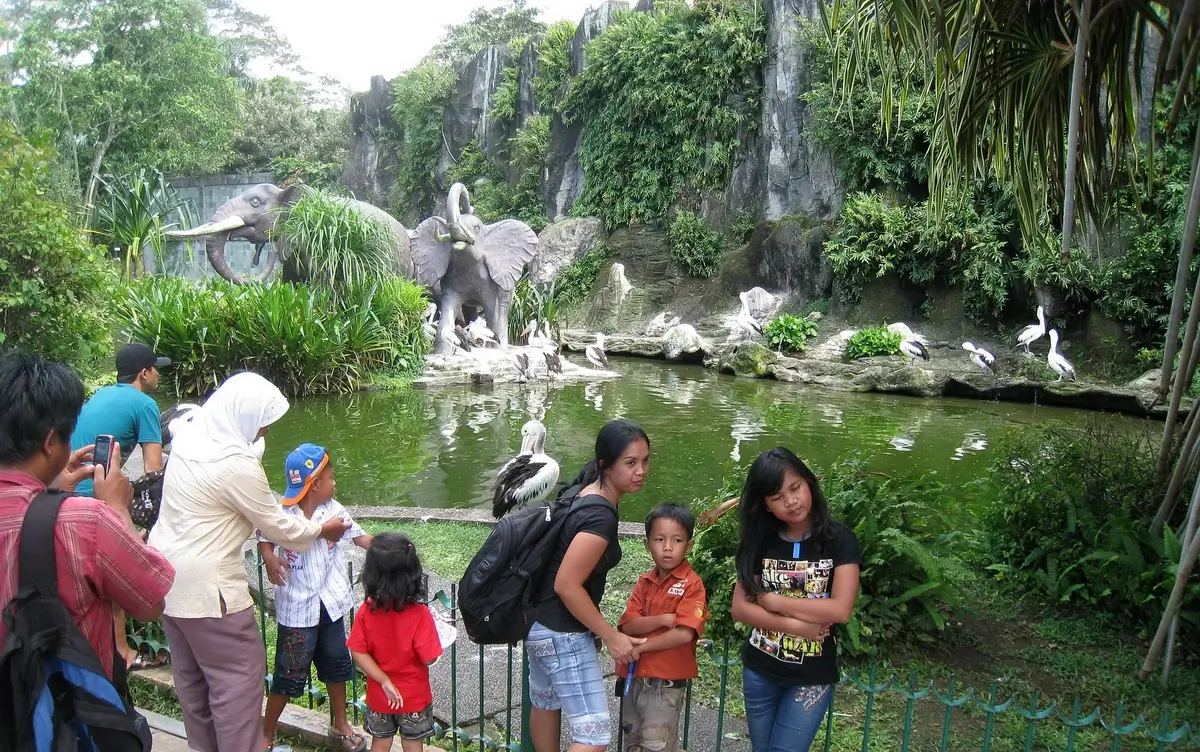
Image source: Wikimedia Commons
12. The Ancol Dreamland Complex
Dreams really do come true—at least at the Ancol Dreamland Complex. This amusement park is Jakarta’s answer to Disneyland, complete with rides, water parks, an oceanarium, and even a freakin’ beach! Located on Jakarta’s waterfront, Ancol Dreamland is a one-stop-shop for all things fun.
Ever fancied cable car rides overlooking the sea? They got it. How about gorging on seafood with views of the sunset? Consider it done. If you’re in Jakarta, missing out on Ancol is like refusing a free sample at a bakery—you just don’t.
13. Affordable Luxury
If you’re the kind of person who likes caviar dreams on a canned tuna budget, Jakarta has got you covered. Believe it or not, affordable luxury is one of Jakarta’s best-kept secrets. Whether it’s spa treatments, gourmet meals, or five-star hotel stays, you can indulge without breaking the bank.
Sure, it’s not as cheap as some other Southeast Asian destinations, but compared to Western cities, it’s a steal. So go ahead, pamper yourself. You can live the high life without the high price tag.
14. Rich Musical Heritage
Hold onto your earplugs, folks, because Jakarta’s rich musical heritage is going to blow you away! Ever heard of Dangdut? It’s Indonesia’s homegrown pop genre that blends traditional music with rock and even a sprinkle of Bollywood. The city is also a breeding ground for jazz, punk, and even indie music.
Jakarta hosts the annual Jakarta International Java Jazz Festival, where renowned artists and newbies come to jam. But if festivals aren’t your thing, just hit up one of Jakarta’s numerous live music venues. It’s a smorgasbord of auditory delights!
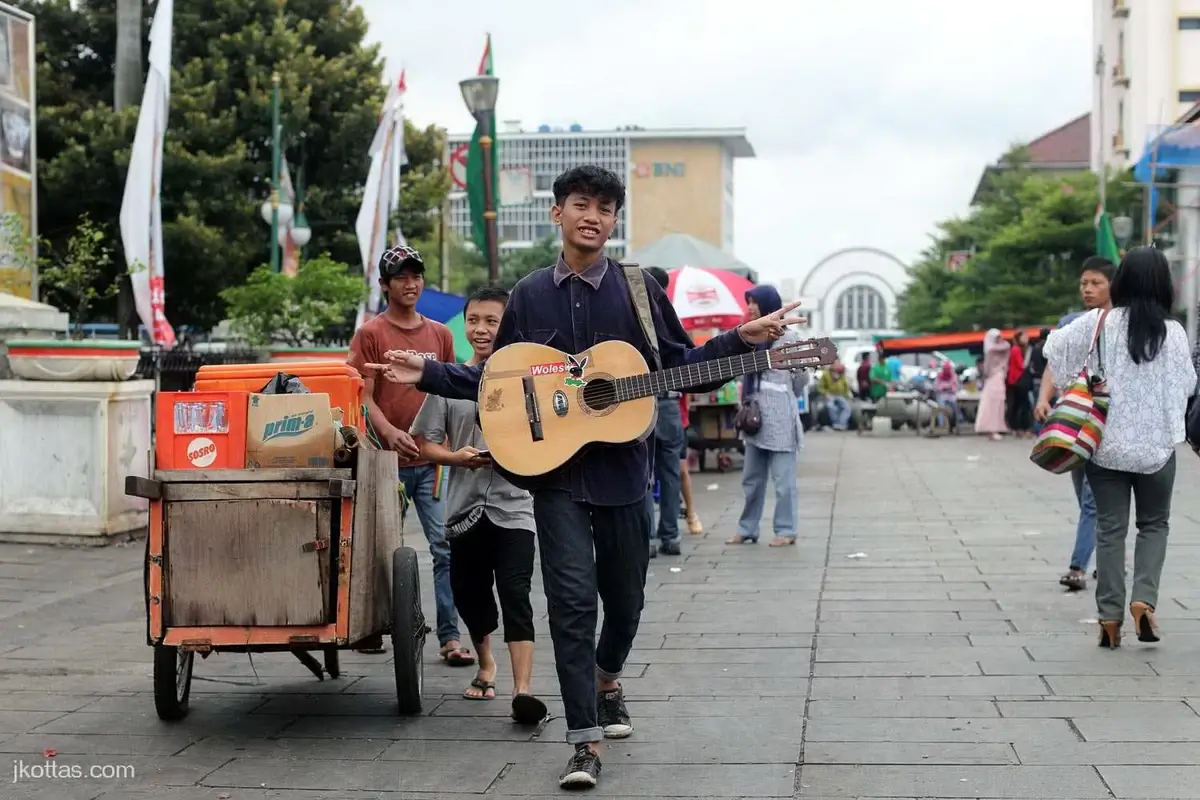
Image source: jkottas.com
15. Frequent Floods, But Life Goes On
Okay, time for a splash of reality. Jakarta has its fair share of water woes, with frequent floods making headlines quite often. From light drizzles to heavy downpours, the city’s low-lying areas are particularly susceptible to flooding. But here’s the kick: life in Jakarta doesn’t stop; it just puts on some rain boots and keeps marching!
Residents have adapted to the watery inconvenience with elevated houses and mobile apps that provide real-time flood information. Talk about going with the flow, eh?
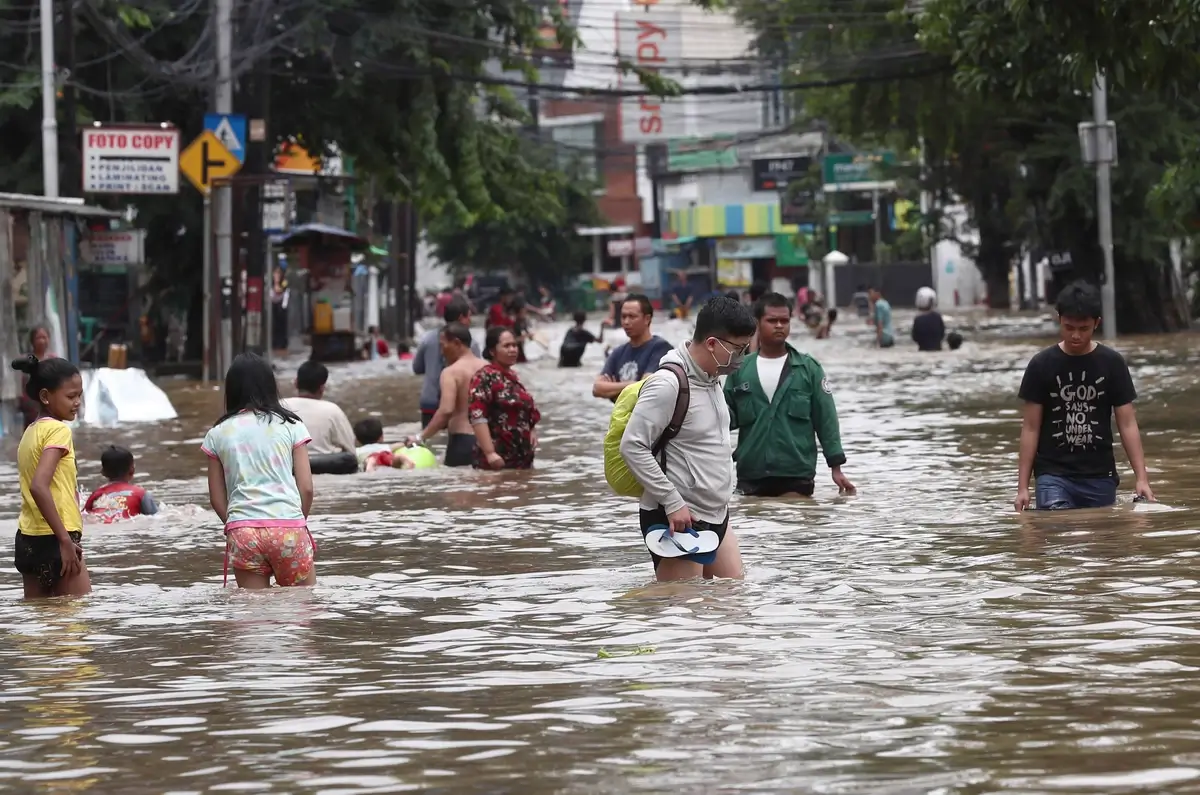
Image source: iklimhaber.org
16. Jakarta is Built on a Swamp
Speaking of water, did you know that Jakarta is basically built on a swamp? Yep, this bustling metropolis was once a marshy expanse, which explains its current flood problems. But hey, the city turned lemons into lemonade—or swamp into skyscrapers!
The Dutch colonizers initially built a network of canals to manage the marshland, which helped pave the way for the sprawling urban jungle Jakarta has become today.
17. The City’s Expensive “Ojek” Rides
Hold onto your wallets! Jakarta’s “Ojek” motorcycle taxis are as exciting as they are exorbitant. While you get to bypass the city’s notorious traffic jams, these expensive Ojek rides can sometimes cost more than a meal at a mid-range restaurant. Convenience comes at a price, my friends.
These rides have become such an integral part of Jakarta’s urban culture that they’re almost as iconic as the city’s traffic jams. Apps like Gojek and Grab have made them more accessible, but still, it’s a splurge.
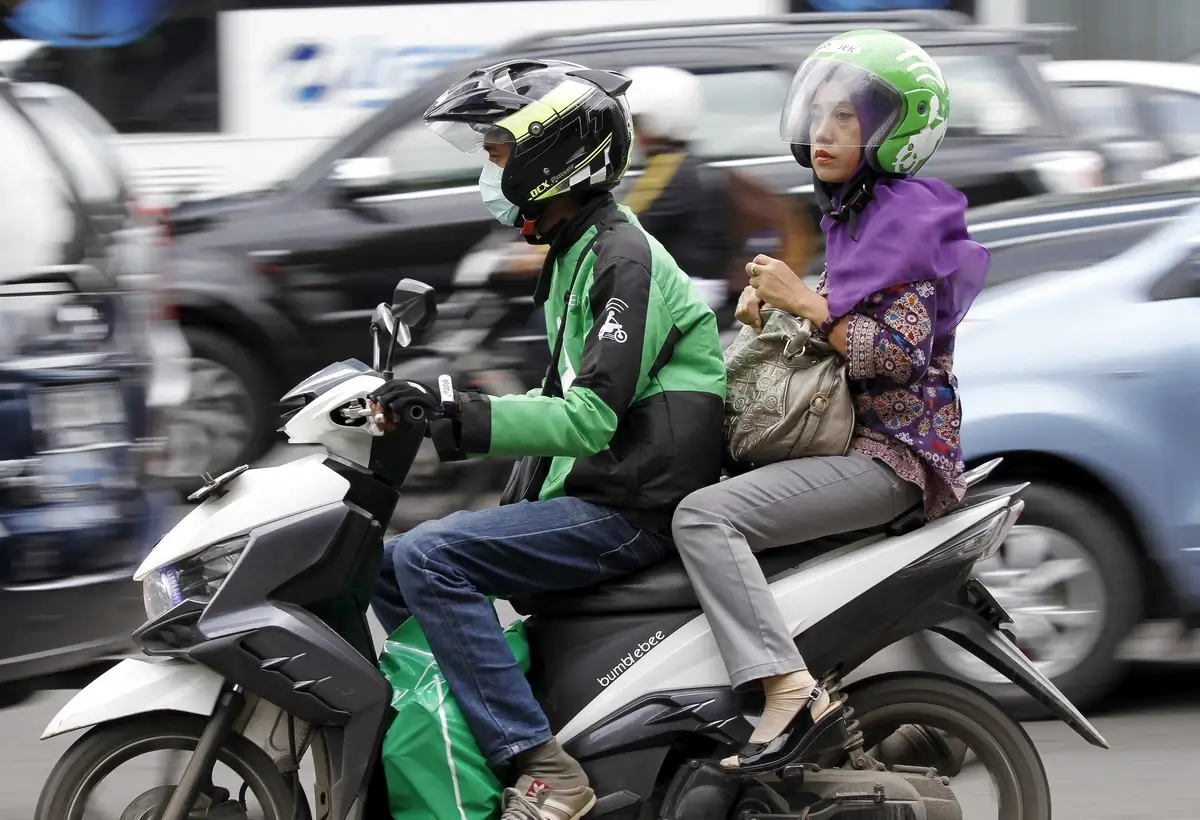
Image source: businesstimes.com.sg
18. Chinatown or “Glodok”
A slice of China in Indonesia? You bet! Jakarta’s Chinatown, also known as “Glodok,” is a kaleidoscopic whirlwind of sights, sounds, and, oh, the smells! From incense wafting out of temples to the aroma of freshly cooked Chinese-Indonesian street food, it’s sensory overload in the best way possible.
It’s one of the largest Chinatowns in Indonesia and a must-visit for any tourist. Whether you’re looking for medicinal herbs or a dragon dance, Glodok’s got it all.
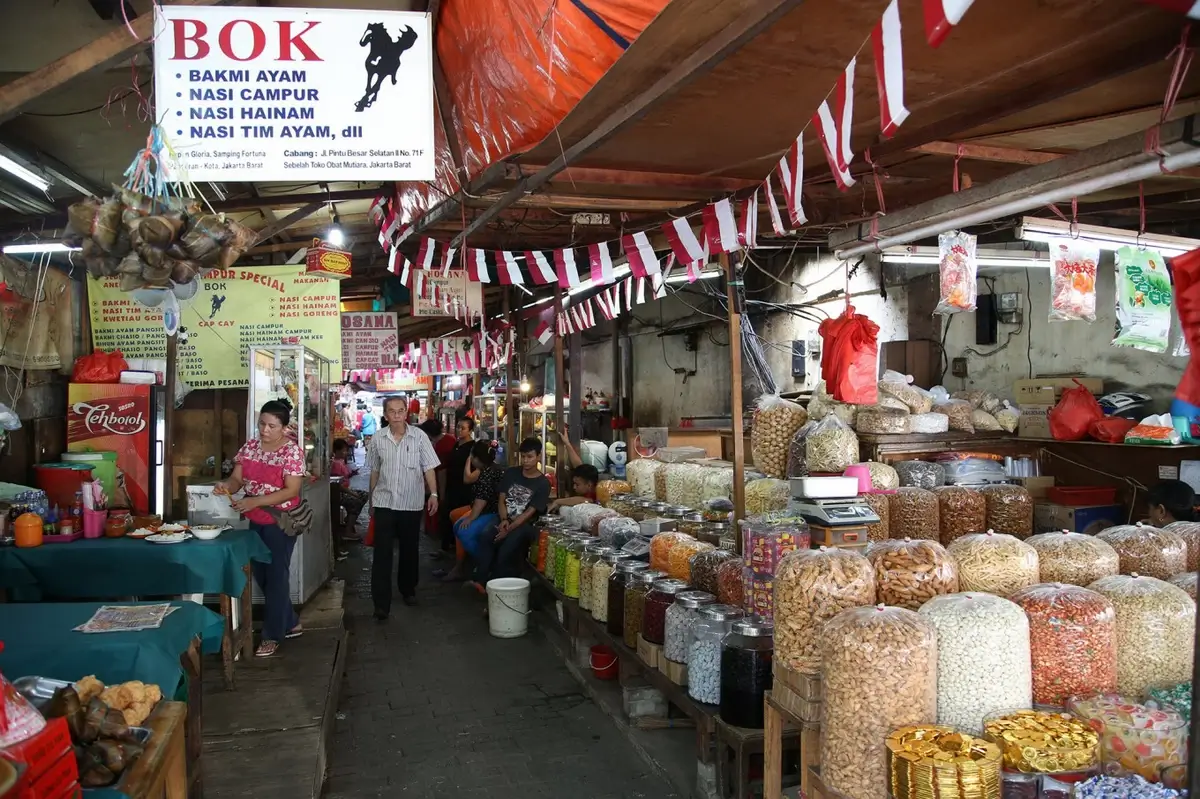
Image source: thejakartapost.com
19. Jakarta Bay
Ahoy, matey! Ready to sail through one of the most intriguing parts of Jakarta? The capital city is right next to the sea, and Jakarta Bay is where all the magic happens. From boating to beachside lounging, this area is a gateway to the Thousand Islands (no, not the salad dressing).
However, it’s not all fun and games. The Bay is also a crucial part of Jakarta’s economy, housing one of Indonesia’s busiest ports, Tanjung Priok. But hey, you can still find spots to soak in the tropical sun.
20. Skyscrapers Galore
Heads up! Literally. Jakarta’s skyline is sprinkled with skyscrapers galore that’ll make your neck hurt from all the looking up. From office buildings to luxurious residences, the city’s skyline screams, “I’m modern, and I know it!” In fact, Jakarta has more skyscrapers than any other city in Indonesia.
Among the towering giants is the Wisma 46, which stands at a cool 262 meters. It’s not just the buildings that are tall; Jakarta’s ambitions are sky-high too.
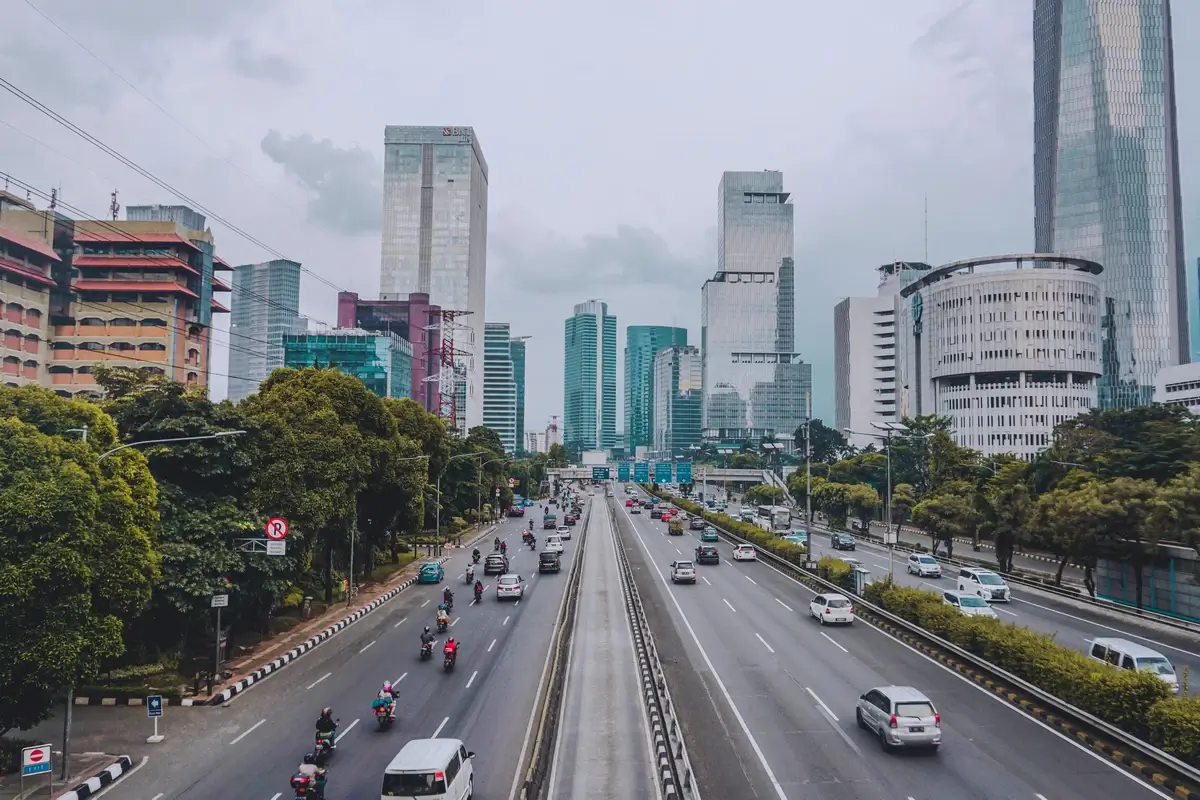
Alifia Harina / Pexels
21. Jalan Jaksa: The Backpacker’s Lane
Ditch the suit and tie because we’re heading to Jalan Jaksa, the Backpacker’s Lane. This street is Jakarta’s unofficial hostel district and a magnet for budget travelers. But don’t be fooled; it’s not just about cheap stays. Jalan Jaksa is an ecosystem of international cuisines, funky bars, and some of the best fun facts about Jakarta you’ll pick up during your trip.
From Australian pies to Indonesian satay, your taste buds can travel the world without ever leaving the lane. It’s the melting pot within the melting pot!
22. Financial Hub of Indonesia
Ka-ching! That’s the sound of money flowing through Jakarta, the financial hub of Indonesia. With the Indonesian Stock Exchange and countless multinational corporations calling it home, Jakarta is where business bigwigs come to play.
The city generates about 17% of Indonesia’s total GDP, making it an economic powerhouse that drives the country’s fiscal engine. So whether you’re a young entrepreneur or a seasoned investor, Jakarta is your playground.
23. A City of Malls
Here’s a fun fact about Jakarta: this city is the “mall capital,” boasting over 170 malls and counting. From high-end designer stores to budget-friendly options, the city offers a full shopping ecosystem.
Interestingly, malls in Jakarta are not just for shopping. They are lifestyle centers where you can dine, watch movies, or even work out. It’s a mall marathon, and everyone’s invited!
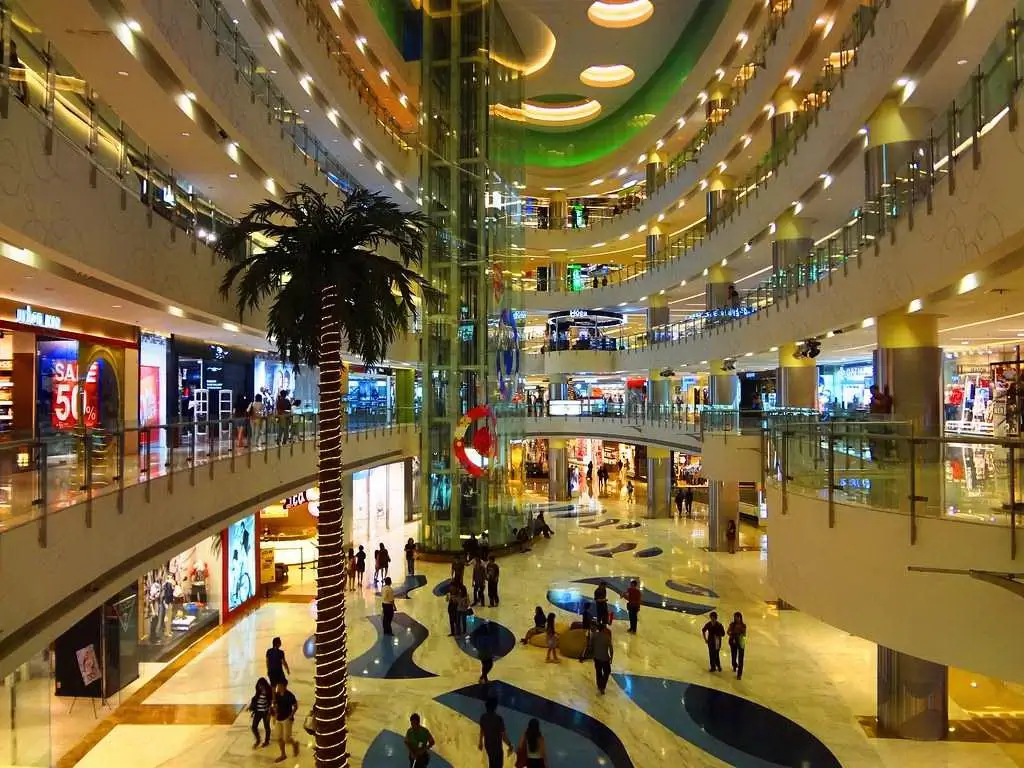
Image source: holidify.com
24. Extreme Weather
Sweating one minute and soaked the next—that’s extreme weather in Jakarta for you. With a tropical climate, Jakarta experiences both hot, humid days and heavy rainfall, sometimes even on the same day. It’s like Mother Nature can’t make up her mind.
The city gets most of its rain between November and April, so pack accordingly. Otherwise, you might be part of the flood story we talked about earlier!
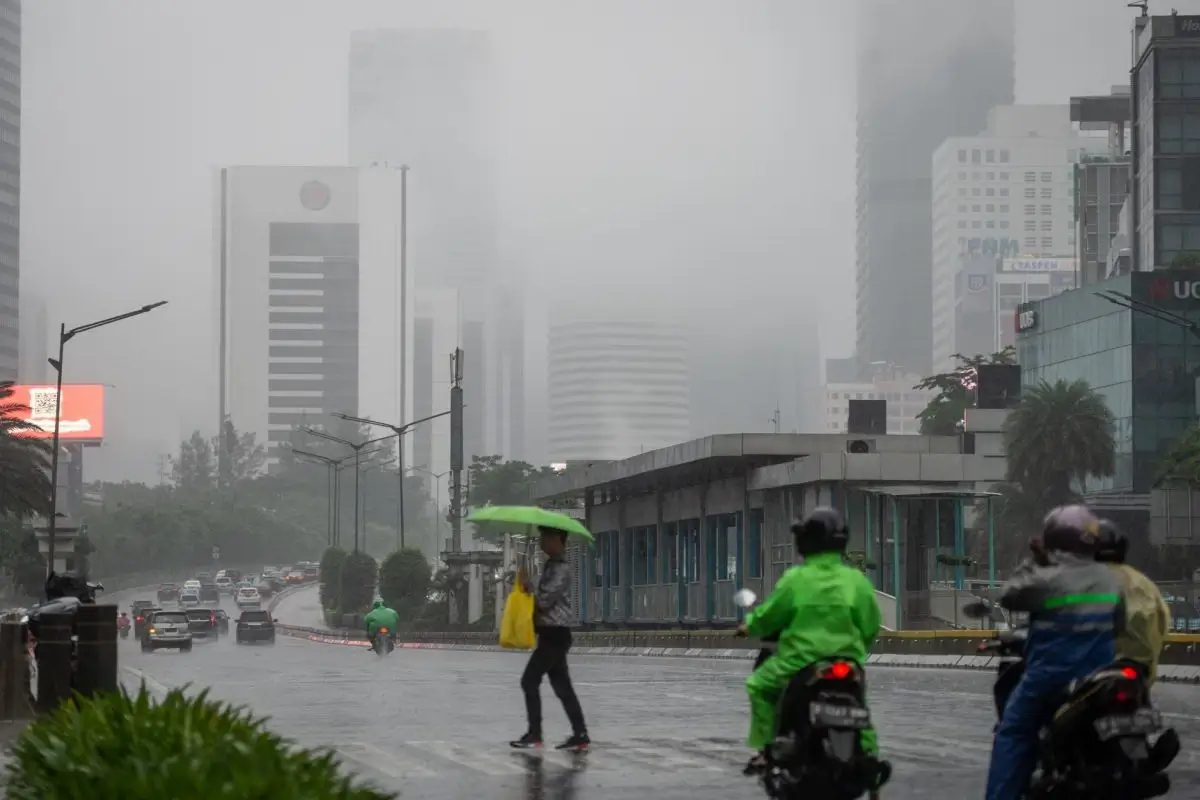
Image source: thestatesman.com
25. Rich Colonial History
Ah, history buffs, get ready for a time-traveling treat! Jakarta has a rich colonial history, evident in its architectural landmarks and museums. Originally known as Batavia under Dutch rule, the city was a significant port and a colonial gem.
Walking through areas like Kota Tua, you can still feel the echoes of the past, from Dutch-style buildings to ancient maritime artifacts. It’s like stepping into a time machine, but without the risk of altering the space-time continuum.
26. Jakarta’s Public Transportation
Jakarta has an extensive public transport system that includes buses, commuter trains, and a spanking-new Metro Rapid Transit (MRT). TransJakarta, the bus rapid transit (BRT) system, was the first of its kind in South East Asia when it launched in 2004. With over 250 routes, it’s a backbone for Jakarta’s public transport.
But here’s the twist: Jakarta’s public transport still faces challenges like overcapacity, especially during rush hours. A single bus or train can carry up to 200% of its intended capacity. With 48 million trips daily across all types of public transport as of 2023, planning your transit ahead is not just wise; it’s essential.
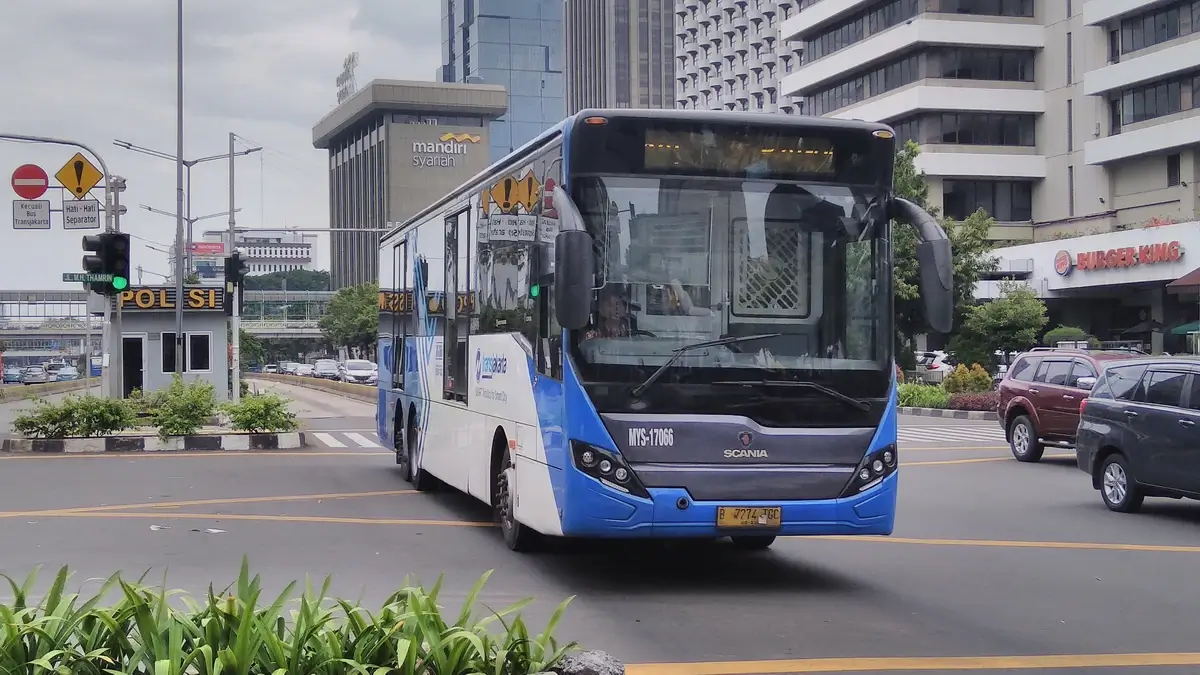
Image source: Wikimedia Commons
27. J-Town’s Street Art
Graffiti, murals, installations—oh my! J-Town’s street art is nothing short of a visual feast. It’s one of those Jakarta fun facts that the city is a canvas for local and international artists alike. You can find pieces that make political statements or ones that simply add a splash of color to the urban jungle.
Stroll down the streets of Kemang or Cikini, and you’ll come face to face with art that pops, literally off the walls. In Jakarta, even the streets have something to say.
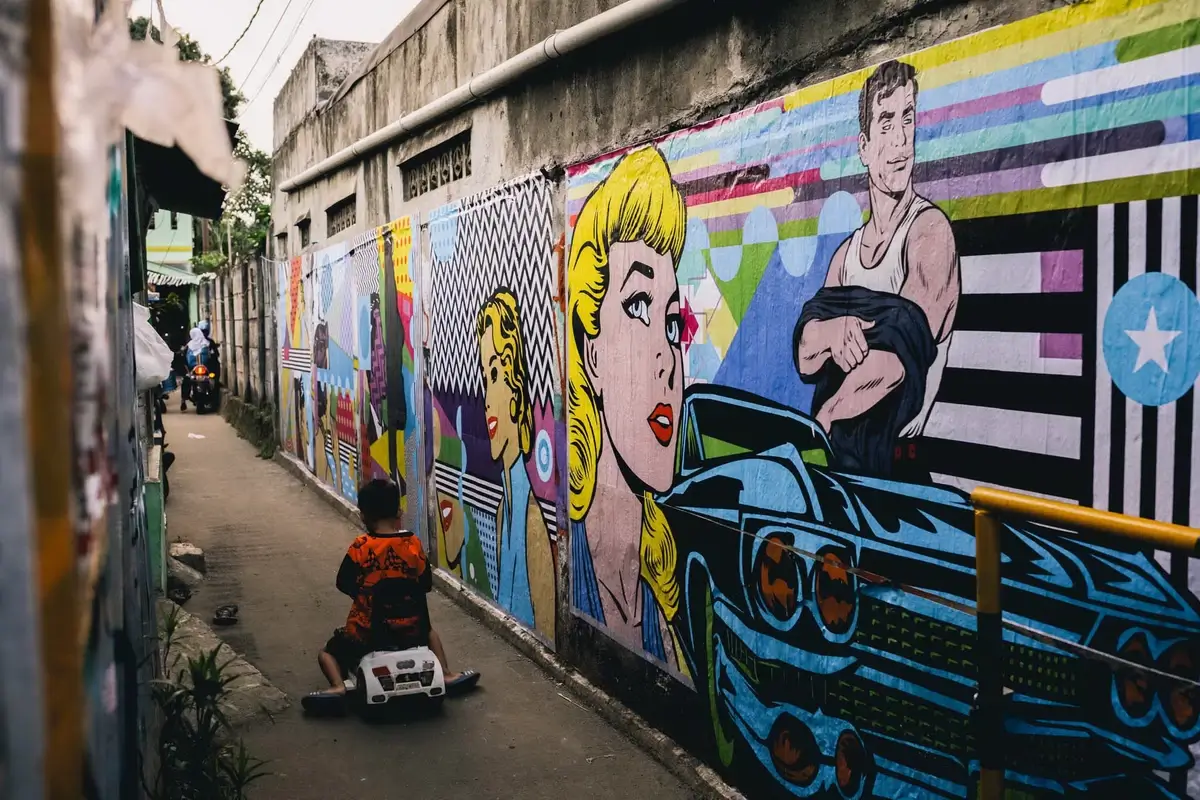
Image source: microgalleries.org
28. High-Rise Slums
Brace yourself for a paradox. Jakarta is home to high-rise slums, a juxtaposition that will make you scratch your head. While the city boasts opulent skyscrapers, it also has cramped, vertical slums where residents live in less-than-ideal conditions.
It’s an eye-opener and a call for urban improvement, showing that a city’s height is not always proportional to its quality of life. Jakarta offers lessons in contrasts, reminding us that every high has its low.
29. The Green Spots
And now for something completely different: the green spots! Believe it or not, amid the concrete jungle, Jakarta has pockets of green. Parks like Taman Suropati and Taman Mini Indonesia Indah offer a breath of fresh air, literally.
These green havens are more than just Instagram spots; they’re community centers where people jog, do yoga, or simply enjoy nature. For a sprawling metropolis, Jakarta does a pretty good job keeping its green thumbs up.

Image source: sindonews.com
30. Sports Fever
Who knew Jakarta could give major cities a run for their money when it comes to sports? Soccer is the city’s pulse, with Persija Jakarta being one of the oldest and most successful clubs in Indonesia, founded in 1928. Jakarta’s sports enthusiasm isn’t just limited to soccer, though. Badminton and basketball also enjoy a large following.
When it’s time for the Asian Games or any major international tournament, you better believe the city transforms into a sporting mecca. Stadiums like Gelora Bung Karno can accommodate over 88,000 spectators, making it one of the largest in Southeast Asia.
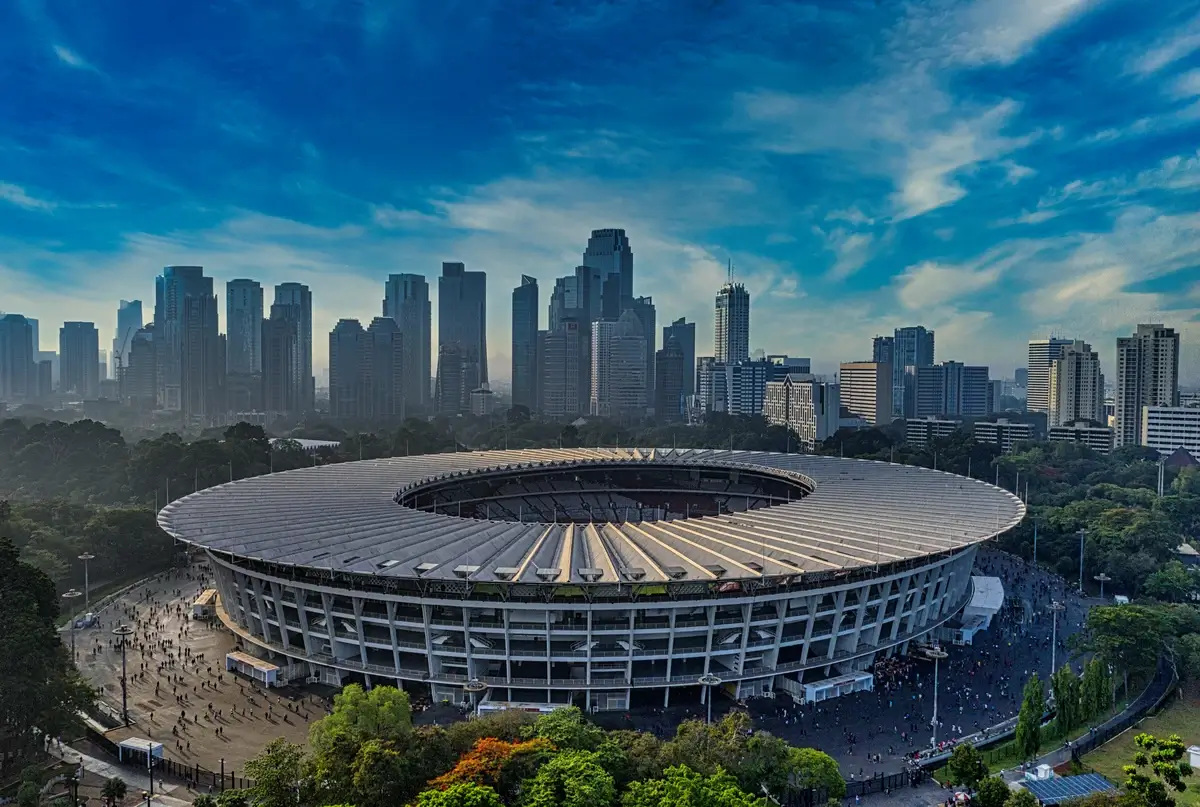
Tom Fisk / Pexels
31. The Coffee Culture
Hold on to your mugs, coffee aficionados! Jakarta is riding the third wave of coffee culture like a pro. From traditional “kopi tubruk” to artfully-crafted lattes, the city is bustling with coffee shops and cafes. You might be surprised to know that Indonesia is the fourth-largest coffee producer in the world, and Jakarta is the caffeine heart of the country.
Whether you prefer chain cafes like Starbucks or cozy indie spots, Jakarta has it all. Special mention to places like Giyanti Coffee Roastery and Tanamera, offering ethically-sourced beans and an experience that’s 100% Jakarta.
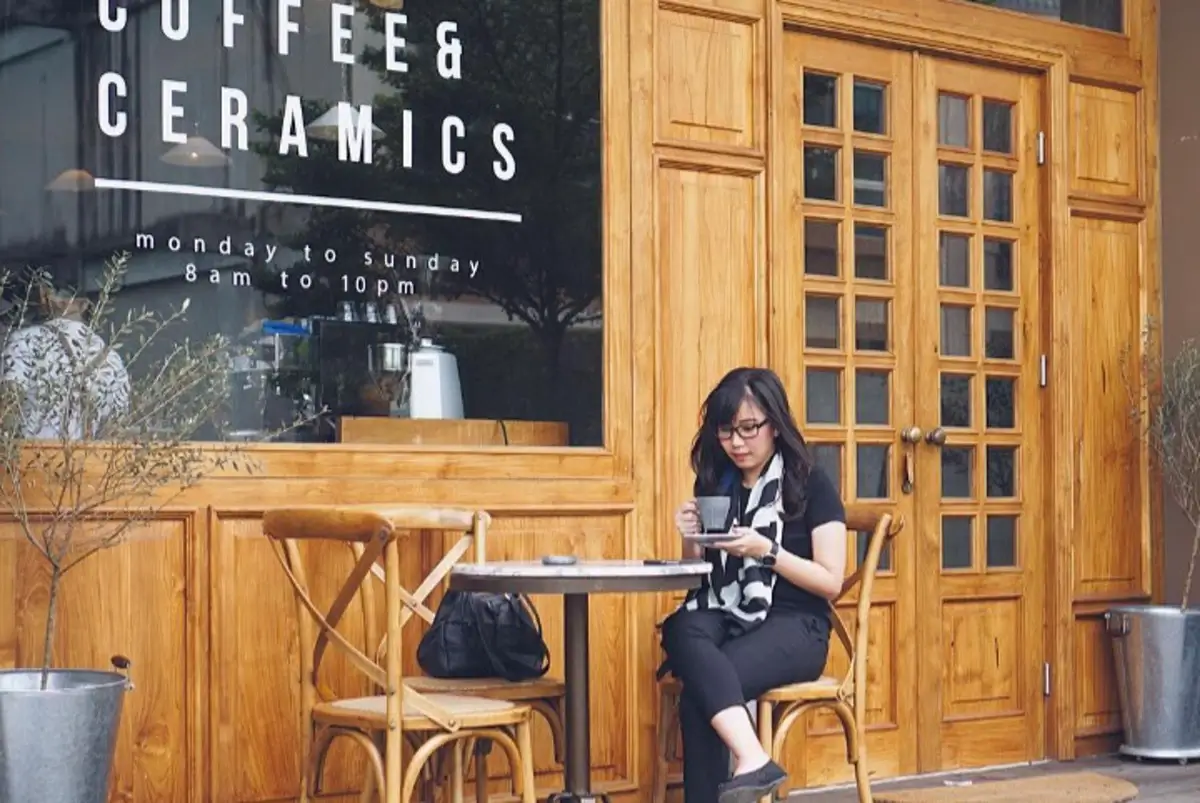
Image source: thejakartapost.com
32. City of Events
Ready to party? You’re in the right city. Jakarta is the City of Events, from international music concerts to traditional festivals like Jakarta Great Sale and Jakarta Fashion Week. With a line-up that varies from EDM festivals to traditional wayang kulit performances, the city has something for everyone.
It’s one of those fun facts about Jakarta that the city never sleeps when it comes to events. The Jakarta International Expo (JIExpo) is one of the leading event venues in Indonesia, hosting over 40 international exhibitions annually.
33. Birthplace of Obama’s Stepfather
Here’s a tidbit that may raise an eyebrow: Jakarta is the birthplace of Lolo Soetoro, Barack Obama’s Indonesian stepfather. Soetoro was an Indonesian geographer and army colonel. He and Obama’s mother, Ann Dunham, married in 1965 after meeting at the University of Hawaii.
Soetoro’s influence led the family to live in Jakarta for a few years, shaping young Obama’s worldview and offering him a unique childhood experience. How’s that for a historical family connection?
34. Jakarta’s Thriving Art Scene
Art lovers, feast your eyes! Jakarta is an epicenter for Indonesian art and culture. The city boasts numerous galleries, like the National Gallery of Indonesia and private ones such as the Nadi Gallery, showcasing everything from traditional to contemporary art. Don’t forget about the murals that decorate the city; they’re Instagram gold.
Street performances are also frequent, from puppet shows to traditional dances. Art isn’t just in galleries; it’s in Jakarta’s soul. If you’re looking to get your cultural fill, Jakarta should be penciled in on your bucket list.
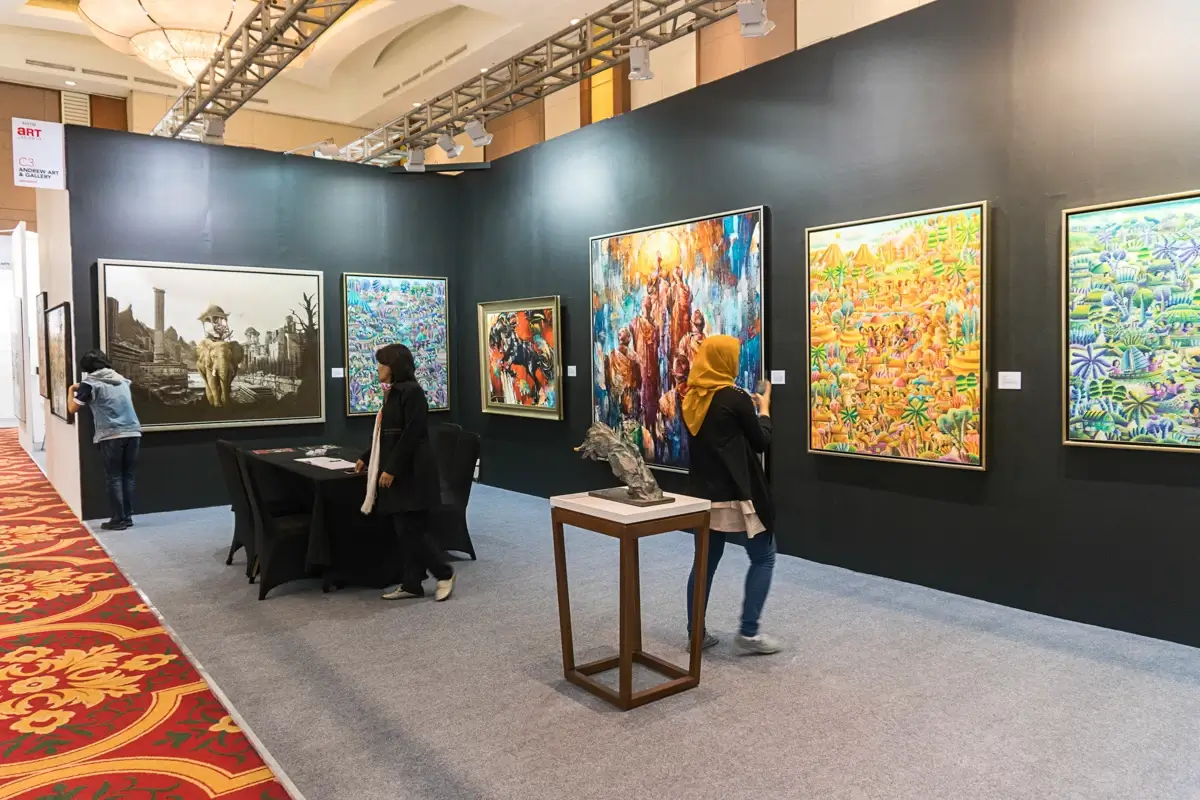
Image source: indoartnow.com
35. The Importance of September 9th
Clear your calendar for the 9th of September if you’re in Jakarta. Why? It’s Jakarta’s anniversary! The capital city of Indonesia celebrates its birth with various events, from parades to cultural performances. September 9, or 9/9, is no ordinary day; it’s a city-wide fiesta.
Founded in 1527, Jakarta has come a long way from its humble beginnings as a port city. On this day, the city is teeming with life even more than usual, and it’s a great way to experience Jakarta’s local culture at its peak. How’s that for a September to remember?
FAQ
What are 10 interesting facts about Jakarta?
- World’s Most Populous Island: Jakarta is situated on Java, the world’s most populous island. The city itself is a microcosm of Indonesia, bringing together people from across the archipelago’s more than 17,000 islands. When you visit Jakarta, it’s like getting a bite-sized taste of the whole country.
- Miniature Indonesia: Speaking of a taste of the whole country, don’t miss out on “Taman Mini Indonesia Indah” (Beautiful Indonesia Miniature Park). It’s an expansive park that showcases miniatures of houses from all the different provinces. It’s an Instagram dream, but more importantly, it’s a real-life manifestation of Indonesia’s motto, “Unity in Diversity.”
- Thriving Street Food Scene: You haven’t truly experienced Jakarta until you’ve tried its street food. From the savory martabak to the sweet pisang goreng (fried bananas), Jakarta’s food stalls are a culinary treasure trove that can turn even the pickiest eater into an adventurous foodie.
- Old Batavia: Jakarta was once known as Batavia under Dutch colonial rule, and the area still called “Old Batavia” is a must-see. The Dutch square, lined with old colonial buildings, gives you a glimpse into the city’s complicated but intriguing history.
- City of Malls: Jakarta is home to more than 170 malls! Yes, you read that right. While traditional markets are still very much a part of the city, Jakarta is a shopaholic’s dream. Whether you’re hunting for international luxury brands or local indie finds, Jakarta has it all.
- Macet (Traffic Jams): It wouldn’t be fair to paint a picture of Jakarta without mentioning its infamous traffic jams. But here’s the interesting part: locals have turned their cars into mini-living spaces. It’s not uncommon to see someone making a cup of coffee or even practicing a musical instrument while waiting for traffic to move!
- Jakarta’s Sinking Reality: The city is sinking at an alarming rate due to groundwater extraction and the weight of buildings. It’s a real-life Atlantis in the making. Some parts of the city are sinking as much as 10 inches a year!
- Betawi Culture: Amidst the melting pot of ethnicities and cultures, the indigenous Betawi culture still has a strong presence in the city. You’ll spot this in the form of traditional Ondel-Ondel puppets and the unique style of Betawi houses.
- High-Tech Public Transport: Despite its traffic woes, Jakarta is working hard to modernize its public transport system. The introduction of the Metro and revamped bus systems aims to make the city more accessible and green.
- Island Getaway: The Thousand Islands (Kepulauan Seribu) are a quick boat ride away from Jakarta. These islands offer a stark contrast to the city’s frenetic pace, offering opportunities for diving, snorkeling, and simple relaxation.
What is Jakarta known for?
Jakarta is best known as Indonesia’s sprawling capital and economic hub, boasting an eclectic blend of cultures, religions, and languages. It’s a melting pot where traditional markets coexist with luxurious malls, street vendors vie for attention alongside fine-dining restaurants, and modern skyscrapers overlook historic colonial buildings. Jakarta is also infamous for its traffic jams and as a city grappling with significant environmental challenges, including sinking land and pollution. Despite these challenges, the city remains the epicenter of Indonesian politics, business, and culture, attracting people from all corners of the archipelago and beyond.
What is the best thing about Jakarta?
The best thing about Jakarta, hands down, is its people and the cultural diversity they represent. The city serves as a convergence point for myriad ethnic groups, languages, and traditions from across Indonesia’s extensive archipelago. This rich tapestry is reflected in every aspect of Jakarta’s daily life—from the food to the arts, and from fashion to festivals. It’s a city where you can experience the entire Indonesian archipelago in a single day, through culinary adventures, shopping expeditions, or cultural interactions. The residents are known for their warmth and hospitality, making it an intriguing and welcoming place to visit.
Why is Jakarta called the sinking city?
Jakarta has garnered the unfortunate label of a “sinking city” due to its alarming rate of land subsidence. The city is sinking as much as 10 inches a year in certain areas, which is caused by a combination of factors including excessive groundwater extraction and the heavy weight of buildings. This subsidence makes Jakarta extremely susceptible to flooding, particularly as sea levels rise due to climate change. Major steps are being taken to combat this, including efforts to construct sea walls, but it remains one of the most pressing challenges facing the city today.
What is the oldest name of Jakarta?
The oldest name of Jakarta is “Sunda Kelapa,” which was the name of the port around which the city initially grew. This was long before it became Batavia under Dutch colonial rule or Jakarta in modern times. Sunda Kelapa was an important trading port and played a significant role in the region’s history.
Why is Jakarta called a fascinating place to visit?
Jakarta is a fascinating destination because it serves as a living, breathing testament to contrasts and diversity. The city embodies the old and the new, the rich and the poor, and the traditional and the modern, all coexisting in a chaotic but strangely harmonious balance. From the ancient port of Sunda Kelapa to futuristic skyscrapers, from traditional Betawi puppet shows to cutting-edge art galleries, Jakarta offers a wide range of experiences that can’t be found in many other cities. This is a place where you can explore an ancient temple in the morning, shop at a high-end mall in the afternoon, and dine on delicious street food at night—all while meeting some of the friendliest locals you’ll ever encounter.
Why did Jakarta change its name?
Jakarta changed its name from Batavia to Jakarta after Indonesia gained independence from Dutch colonial rule in 1945. The name change was symbolic, shedding the colonial past and embracing an identity that was more reflective of its Indonesian heritage. “Jakarta” itself is derived from the word “Jayakarta,” which is rooted in Sanskrit. It translates to “victorious city,” echoing the triumph of the Indonesian people in their fight for independence.
Is Jakarta stressful?
Like any megacity, Jakarta has its share of stresses—traffic jams, pollution, and a fast-paced lifestyle can take a toll on even the most resilient individuals. However, the city also offers numerous escapes, be it in the form of serene parks, luxurious spas, or quiet corners in one of its many shopping malls. The people in Jakarta have a remarkable ability to find joy and relaxation in small moments, whether it’s a group of office workers playing guitar in a traffic jam or a family enjoying a weekend outing to a nearby island.
Is Jakarta a clean city?
Jakarta faces several environmental challenges, including air pollution and waste management issues. However, the city has been actively working on improving cleanliness and sustainability. Initiatives like banning single-use plastics and implementing a more comprehensive public transport system to reduce car usage are steps in the right direction. While Jakarta may not be as clean as some other international cities, it’s definitely making strides toward becoming a more sustainable urban environment.
Can I wear shorts in Jakarta?
Jakarta is a relatively cosmopolitan city, and wearing shorts is generally acceptable in most casual settings like malls, parks, and some tourist attractions. However, it’s crucial to note that Indonesia is a predominantly Muslim country, and conservative dress is advised when visiting religious sites or traditional neighborhoods. Long pants and skirts, along with sleeved tops, are preferable in such areas. As a rule of thumb, it’s always good to gauge your environment and dress appropriately, balancing comfort with cultural respect.


